| Columns Retired Columns & Blogs |
Acoustic Research AR-1 loudspeaker Measurements
Sidebar 3: Measurements
Specified at 96dB/2.83V/m sensitivity, the Acoustic Research AR-1 did indeed go very loud with only a few amplifier watts, my B-weighted figure of 91dB(B)/2.83V/m still putting the speaker up among the most sensitive I have measured. And, as can be seen from its impedance plot (fig.1), it drops to 4 ohms or below in only two places, which would make it an easy load for an amplifier to drive—were it not for the increasingly capacitive phase angle in the lower midrange and below. This, and the dramatic rise in impedance below 100Hz, are due to the passive high-pass filter used to separate the upper-range drive signal from the range covered by the powered subwoofer.
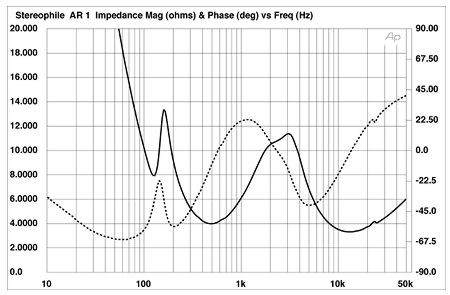
Fig.1 Acoustic Research AR-1, electrical impedance (solid) and phase (dashed). (2 ohms/vertical div.)
The small wrinkle in the impedance trace at 23kHz is due to the tweeter's ultrasonic resonance, and there are a couple of small glitches in the fig.1 traces in the midrange, indicating the presence of cabinet resonances of some kind. Fig.2 is a cumulative spectral-decay plot calculated from the output of a plastic-tape accelerometer fastened to the center of the sidewall opposite the woofer. A strong vibrational mode can be seen at 66Hz; the subjective effect of this is hard to predict, though I would have thought it might make the speaker sound a little "slow" in the bass. However, LG noted no problems in the pace'n'rhythm department. There is a higher-frequency mode apparent at 360Hz, which could also be found on the top and rear panels.
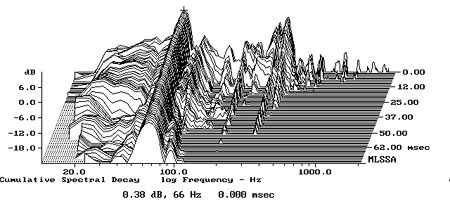
Fig.2 Acoustic Research AR-1, cumulative spectral-decay plot of accelerometer output fastened to side wall opposite woofer. (MLS driving voltage to speaker, 7.55V; measurement bandwidth, 2kHz.)
Fig.3 shows the response of the AR-1 averaged across a 30 degrees lateral window on the tweeter axis at 50" and spliced to the nearfield responses of the midrange units and woofer, as well as to the complex sum of the lower-range responses. The level of the woofer output has been chosen somewhat arbitrarily, but it can be seen that its response basically consists of a bandpass centered on the 20–40Hz octave. The midrange units peak up slightly before rolling off with a steep slope below 130Hz. The net result is a somewhat shelved-down lower-midrange region compared with the regions above 400Hz and below 70Hz, though how this is perceived will depend on how the speakers are set up in the room. Again, LG noted no lack of power to orchestral sound.

Fig.3 Acoustic Research AR-1, anechoic response on tweeter axis at 50", averaged across 30 degrees horizontal window, corrected for microphone response, and spliced to the nearfield midrange response below 375Hz, with the nearfield woofer response plotted below 600Hz.
Higher in frequency in this graph, the speaker's balance is pretty flat overall, with the inevitable small dips offset by equally small excesses of energy. The top octave (between 10kHz and 20kHz) is depressed slightly before the inevitable ultrasonic peak from the titanium-dome tweeter, but whether this is heard as a mellowness or not will depend on the speaker's dispersion in this region. As can be seen in fig.4, the AR-1 has wide dispersion above 5kHz, so its treble will be well-balanced. The cursor in this graph reveals that the slight on-axis peak at 4kHz in the presence region will probably compensate for a lack of off-axis energy.

Fig.4 Paradigm Reference Studio/100 v.3, anechoic response on tweeter axis at 50", averaged across 30 degrees horizontal window and corrected for microphone response, with the complex sum of the nearfield midrange, woofer, and port responses, taking into account acoustic phase and distance from the nominal farfield point, plotted below 300Hz (red). Anechoic response of Studio/100 v.2, taken under identical conditions (blue).
In the vertical plane (fig.5), the speaker's balance is not too critical of listener height. The tweeter axis is 34" from the floor, but as long as the listener sits with his or her ears between 30" and 40" from the floor, the AR-1's perceived balance should not change too much. And, as LG found out, standing will significantly dull the speaker's balance.
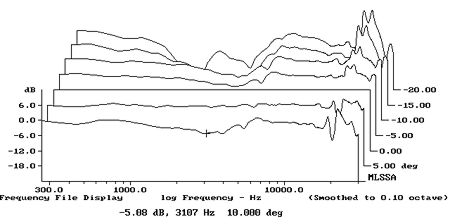
Fig.5 Acoustic Research AR-1, vertical response family at 50", from back to front: differences in response 20 degrees-5 degrees above HF axis, reference response, differences in response 5 degrees-10 degrees below HF axis.
In the time domain, the AR-1's step response (fig.6) indicates that the tweeter and midrange units are connected in inverted acoustic polarity. Fig.7 shows the woofer's step response. It actually rings for quite a long time, this presumably due to this drive-unit's constrained bandwidth. I would have thought this might add a somewhat slow quality to the AR-1's character; in my own brief auditioning of the speaker, I did think the woofer region sounded a little disconnected from the excellent midrange..
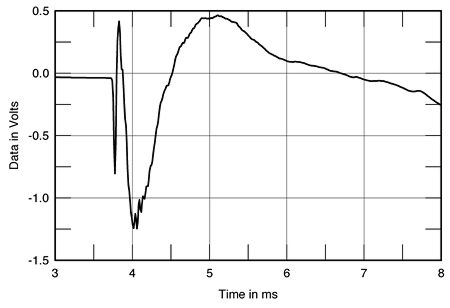
Fig.6 Acoustic Research AR-1, step response on tweeter axis at 50" (5ms time window, 30kHz bandwidth).
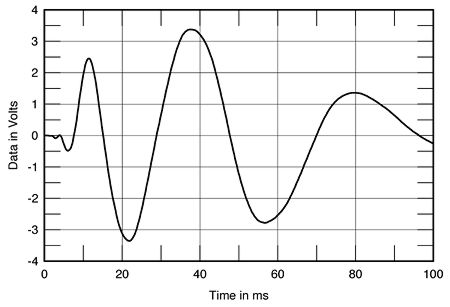
Fig.7 Acoustic Research AR-1, nearfield woofer step response (100ms time window, 30kHz bandwidth).
Finally, the AR-1's waterfall plot (fig.8) has a very slight amount of stored energy apparent at 4kHz where there is an on-axis peak. But this is very low in level, and, other than in the region above 20kHz where the tweeter modes dominate, the plot is otherwise commendably clean.—John Atkinson

Fig.8 Acoustic Research AR-1, cumulative spectral-decay plot at 50" (0.15ms risetime).
- Log in or register to post comments




































